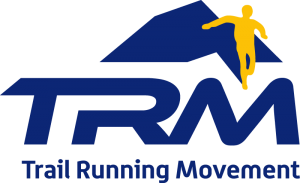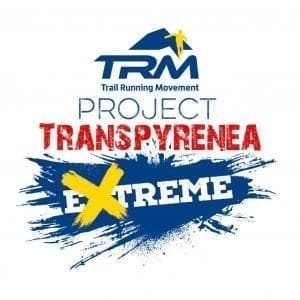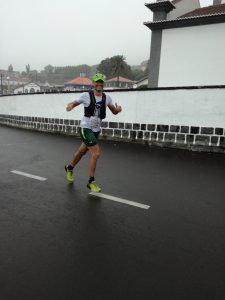RETURNING TO RUNNING ULTRA TRAILS AFTER A SERIUOS INJURY. INTERVIEW WITH MICHELE TASSELLI TRM COACH AND TRAIL RUNNER
C. “Michele tell us about the accident, the type of injury and the medical interventions?”
M. “In June 2016 I participated with a Group of Trail Runners at a TRM multistage training around the Mont Blanc. We had bad weather with rain, poor visibility and snow in some places, but nothing that seriously prevented to continue until the end. On the last day, just after the Tête aux Vents, a rock gave way under my foot, making me fall into a small crevasse. I felt a great pain in my right foot, but I did not imagine what had happened to me: fracture of the tibial malleolus, displaced fracture of the fibula, ligaments around the ankle and cartilage seriously hurt.. All what happened after the injury is quiet confused memory: emergency transport with helicopter at the Clinique du Mont Blanc in Sallanche, 4 hours of reconstructive surgery, 2 screws in the malleolus, 1 titanium plate with 11 screws in the fibula, 1 screw to immobilize the joint. After three months I removed the stabilizing screw, and after a year exactly I removed the rest.”
C. “When did you start the rehabilitation program and what did you do?”
M. “The accident occurred in the middle of the competitive trail running Season, my muscle tone was at its best, so I was able to start the recovery plan a few days after the surgery. The first month I was immobilized in bed, so I used the Compex electrostimulation machine for the lower limbs, and the TRX for the upper ones. After removing the stabilizing screw, I was able to put my foot on the ground but without loading and to start an Active Recovery Program (TRM Recovery Plan), based on cross training in the pool and soft mobilization exercises, accompanied by physiotherapy sessions of manipulations and massages. It was hard and painful, but I never gave up. I have used crutches for 4 months, without ever depriving myself of anything, because we must always take care of the psychological aspect of convalescences and for this reason it is important for an athlete to always challenge it self. I still remember the face of the people who saw me climbing up the 450 steps of the Mer de Glace to Chamonix on my crutches: a tough challenge! In the TRM Team we also have a Sports Psychologist who can be very useful in supporting the athletes in these situations. “
C. “What kind of Cross Training techniques did you adopt and how did you organize your training from the 5th Month when the situation became more stable?”
M. “From the 5th month, I adopted a more targeted TRM Rehabilitation Protocol which included 3 weekly sessions, mainly working on proprioception, the recovery of the limb flexion/extension and some muscular exercises with elastic bands for the tone. The ankle was very stiff, so it was initially important to re-educate the correct action of the walk phase, and especially the ability to descent stairs. At the 6th month I introduced the exercise bike, the monopodal squat and multi-day stretching sessions to increase the angles of flexion / traction, then mountain biking on flat and short routes and 2 weekly swimming sessions of 1 hour. The months passed quickly and I was doing good but all the screws were still there, and I could feel them every day.”
C. “When did you returned to run and what were your initial sensations?”
M. “The first steps have been on road in February 2017, despite the screws and the plate, 6 months from the accident. The feeling was fantastic, but the foot did not respond as I wanted: it was like running with a leg of somebody else, I was not able to find the correct support. But after 3 months I could run 30 minutes without stopping. Finally in July 2017, 12 months after the surgery, I removed all the screws and in September I started to train regularly with a TRM Training Plan for short road distances developed specifically for me.”
C. “What are your Goals for 2018?”
M. “I had to face a long recovery and rehabilitation process starting with road running, and performing small progressive tests on trails. I’m definitely back to the trail running since January 2018 when I began to train for medium-long distances adopting the TRM Endurance Method. This is a year a must have a soft and cautious approach. I ran the Maremontana Trail 45Km in 7h28, the Ultra Trail Mugello 60Km just under 9h and I will participate in the Grand Raid of the Treviso Alps 72Km and the Lavaredo Ultra Trail 119km in June.”
C. “What advice would you like to give to those who face an injury?
M. “The most important thing is to choose or orthopedic doctors specialized in endurance sports and in particular running and trail running, because they guarantee a specific and objective vision of the athlete’s needs. We at the TRM Team have a Network of Professional Partners who support the athletes in different parts of Italy. It is very important not to stop, but compatibly with the hospital stay, the medical and the coaches advices, you need to start the active recovery as soon as possible so that you do not completely lose your tone and mass and maintain a positive attitude. Finally, the recovery plan must be developed under the control of Professional Coaches.
My last personal advice: do not give up and do not stop even if you experience pain. It may seem paradoxical, but pain always indicates the limit to be overcome”
Active Recovery Program, cross training, injury, recovery plan, rehabilitation program, trail running, TRM Endurace Plan








